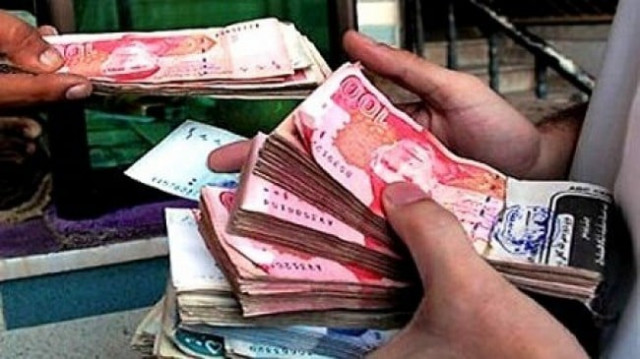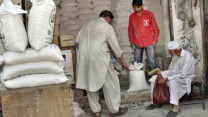The rupee slumps to a new low
The rupee continued to slide against the dollar in the inter-bank market over the past week.

“Demand of dollars is high and supply is low,” said Exchange Companies Association of Pakistan President Malik Bostan while giving the reason for the rupee’s weakness.
He said the government is heavily indebted and has taken further loans of $11.3 billion from the International Monetary Fund and that mounts pressure on the currency. “Eventually these loans have to be repaid and they carry interest as well.”
Pakistan’s external debt stands at $55 billion. Overall debt servicing, including domestic and foreign, will cost around Rs872.92 billion in current fiscal 2010-11, say budget estimates.
According to Bostan’s estimate, the country has to pay $1 to $2 billion in interest on debt every year.
High dollar demand
Citing the reasons for high dollar demand, Bostan said besides import payments, particularly for oil, the greenback has a high appeal from people going abroad for health issues and higher studies.
“The rupee will not fall below 86 as foreign exchange reserves are adequate and remittances from overseas Pakistanis have hit a record high,” he said.
Foreign exchange reserves stand at a record $16.77 billion, which can cover more than five months of imports, thanks to the IMF bailout package. Before that, they stood at a low of $6.6 billion. Besides, remittances in fiscal 2009-10 rose to an all-time high of $8.9 billion, which will give some cushion against the widening budget deficit.
In the last fiscal 2009-10 which ended in June, the budget deficit stood at 6.2 per cent of gross domestic product, breaching the ceiling of 5.1 per cent set for the year.
“The movement of the rupee depends on demand and supply,” a senior bank official said. When asked whether the State Bank will intervene in the market if the rupee dips further, he said no central bank in the world discloses beforehand its intention to step in the market by increasing supply of dollars.
Short-term boom
Chairman Korangi Association of Trade and Industry, Razzak Hashim Paracha, said exporters may reap the fruits of the rupee’s depreciation over the short term.
“Exporters have inventories of inputs, which they buy six weeks in advance from their foreign suppliers. This will give them an advantage but in the long run they will not gain anything. Later, they will purchase raw material for manufacturing export products from abroad at high prices due to the depreciation of the rupee,” he said.
Compared to Indian rupee which stands at 46.74/75 to a dollar, the Pakistani rupee has almost double the value. Because of the weak Pakistani rupee against the Indian currency, Paracha said the exporters have an edge over their Indian counterparts in international markets. “Our main export markets are the US, the UK, European countries and Canada.”
In 2008, the rupee had dropped 22 per cent and in 2009 it fell six per cent.
Published in The Express Triune, July 12th, 2010.



















COMMENTS
Comments are moderated and generally will be posted if they are on-topic and not abusive.
For more information, please see our Comments FAQ